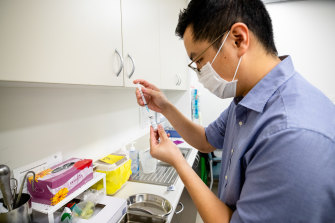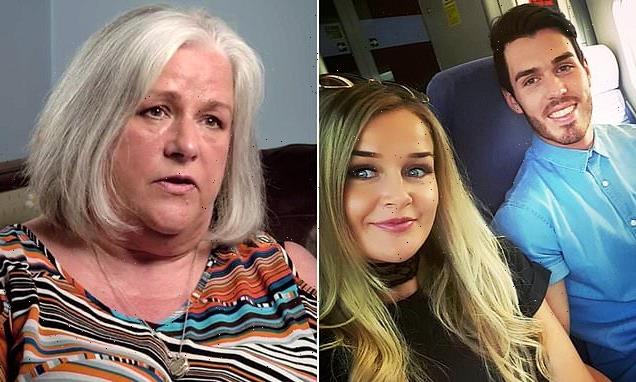For our free coronavirus pandemic coverage, learn more here.
The country’s GPs are preparing to care for more cases of coronavirus in the community as the country opens up with updated guidelines on patient care released to doctors on Wednesday.
Royal Australian College of General Practitioners president Dr Karen Price said GPs will mostly care for mild cases of COVID-19, but they need to be prepared to escalate care and refer patients to hospital if their condition deteriorates.
General practitioners are preparing to care for more moderate cases of COVID-19.Credit:Edwina Pickles
“It’s all about that diagnostic acumen, which GPs and primary care have, and making sure we can monitor people at home, keep them safe, make sure they’re doing what they need to do, make sure they’re not too anxious,” she said.
Across the country, so far more than 90 per cent of the eligible population aged 16 and up have had one dose, and 83.5 per cent are fully vaccinated. While that means most adults are protected against COVID-19, Dr Price said a substantial number remain vulnerable.
“Ten per cent of the population is still around two million people, and they may be two million of the most marginalised and vulnerable groups with low resources,” she said. “And we’re still going to see breakthrough infections in the vaccinated.”
The vast majority of coronavirus cases – about 80 per cent – are likely to only experience mild symptoms and not require hospitalisation or special medical treatment. But according to the new RACGP guidelines for caring with patients with COVID-19, doctors must have plans for monitoring the wellbeing of patients and ensuring they are referred to hospital care if their condition deteriorates.
“GPs may increasingly care for moderately ill patients depending on access to and availability of tertiary health services, their own abilities and capabilities and the patient’s willingness to be cared for in hospital,” the guidelines state.
Dr Price said the guidelines are vital for helping doctors ensure patients get the right care at the right time, particularly as people in NSW and Victoria have died at home with COVID-19 during the course of the latest outbreaks.
“It’s absolutely critically important,” she said, adding there needs to be a focus on monitoring for people from culturally and linguistically diverse backgrounds and those with low literacy to make sure their health plan is explained in the most accessible way.
“We’re going to need to give them very, very clear written instructions for what they need to look out for as well, so that they can also self escalate, and they know exactly where to go and who to ring should they feel there’s a deterioration or someone in their family feels there’s a deterioration,” she said.
Hospital in the home services are already being used to treat COVID-19 patients, but as the pandemic continues GPs will work with hospital networks to provide care to patients with more moderate symptoms.
Dr Price said access to hospital care is particularly challenging in rural Australia.
“Rural and remote are obviously going to face unique challenges – they might have overall less burden of disease in terms of COVID, but when they get COVID, it’s going to be a significant proportion of their workload. So that health system can quickly get overloaded,” she said.
If GPs are going to take on more COVID patients, Dr Price said they would need to be adequately resourced including through supplies of personal protective equipment.
“These things are provided in hospital, but if we’re going to do community care the missing piece of the puzzle is exactly how this is going to be resourced,” she said.
The Morning Edition newsletter is our guide to the day’s most important and interesting stories, analysis and insights. Sign up here.
Most Viewed in Politics
From our partners
Source: Read Full Article



